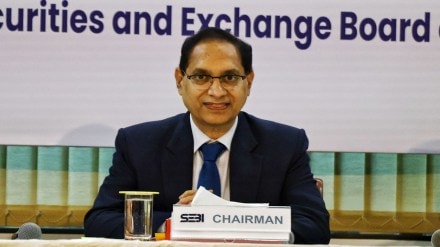The new chairman of the Securities and Exchange Board of India (SEBI), Tuhin Kanta Pandey, has started his Mumbai innings on a strong footing. Among the first set of decisions taken by the regulator’s board is the setting up of a high-level committee to conduct a detailed review of conflict of interest and disclosure norms related to property, investments, and liabilities of SEBI’s board members and officials. The committee will be constituted independently from SEBI, with the markets regulator providing what Pandey called secretarial support. Though the SEBI chairman tried to skirt the issue at Monday’s media conference, it can be assumed that the move was prompted by the controversy his predecessor faced following incessant charges of conflict of interest. Whatever be the reasons, such a review of the SEBI’s Conflict Code (2008) was long overdue. It’s quite laughable that the regulator, which felt the need to make numerous changes to several rules for the regulated, has kept its own code unchanged for 17 years. A course correction was thus necessary, which is precisely what the new chairman has sought to do.
The failure to review has led to the Conflict Code falling short on fulfilling its original purpose on several counts. For example, the code defines “family” as spouse and dependent children below 18 years of age. This defies logic as directors of listed entities are required to disclose details for a much wider number of relatives. SEBI’s insider trading rules have expanded the definition of “connected persons” and “relative”, far beyond what the Conflict Code says. Also, it’s not enough for the chairman and SEBI board members to simply disclose stock transactions within 15 days or abide by a code that they shall not deal in listed securities based on “unpublished price sensitive information”. Indeed, there should be unambiguous rules to address and minimise questions on other possible conflicts of interest. For example, what about possible earnings from properties rented out to business groups with listed companies?
This is particularly important as unlike a civil servant-turned SEBI chairman, a person who has worked in the private sector before becoming the regulator could run into conflicts due to his earlier association with listed entities and business decisions taken during his days in the private sector. Some may unintentionally not disclose investments sold long ago on the grounds that they were no longer relevant. The Code must have clear guidelines with granular details on such issues.
No one denies that ultimately, the confidence of common investors in the securities market rests squarely on SEBI’s professional competence and institutional credibility as much as it does on the integrity of the person helming the regulatory body. And the regulator must not only be of impeccable integrity but also be seen to be above board. But no rule should be so ambiguous that the interpretation depends on how each person deciphers the rules even if he/she has all the good intentions. Just one note of caution, though. While a review of the Conflict Code is necessary, the external committee must ensure that the rules don’t slam the doors on top private sector talent. SEBI needs specialised people who can bring in deeper insights on and understanding of the functioning of financial markets. Madhabi Puri Buch was the first one from the private sector to enter the corner office of SEBI. Hopefully, she won’t be the last one.
